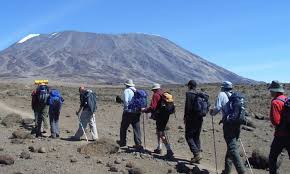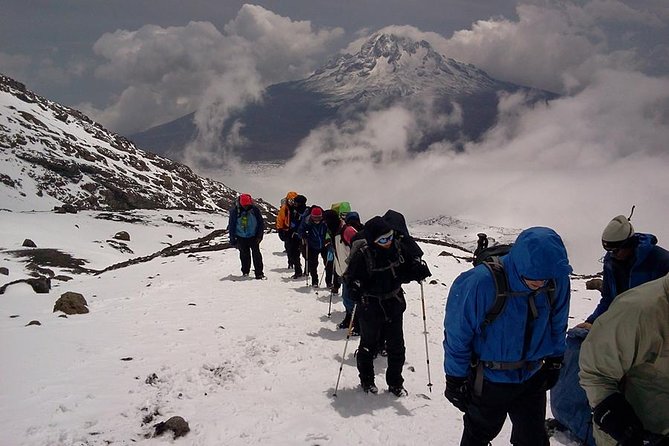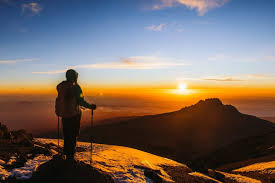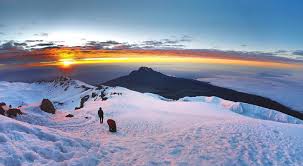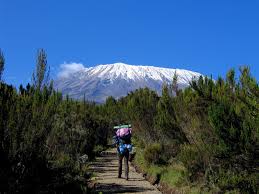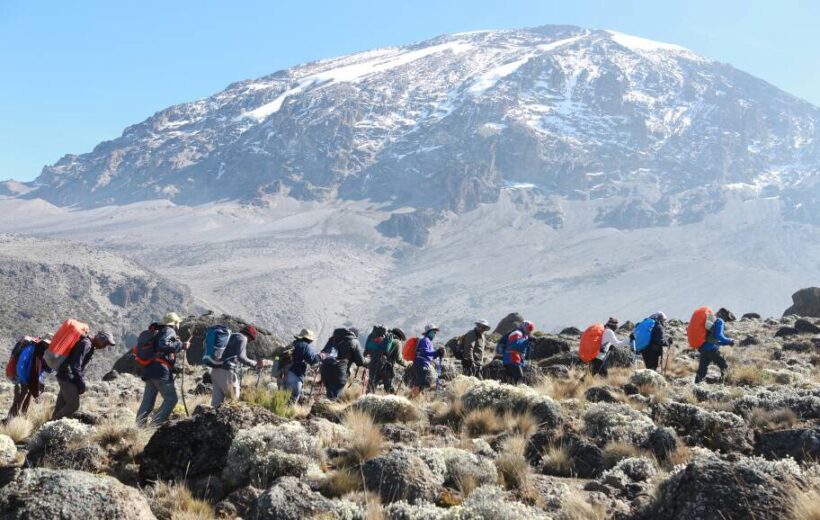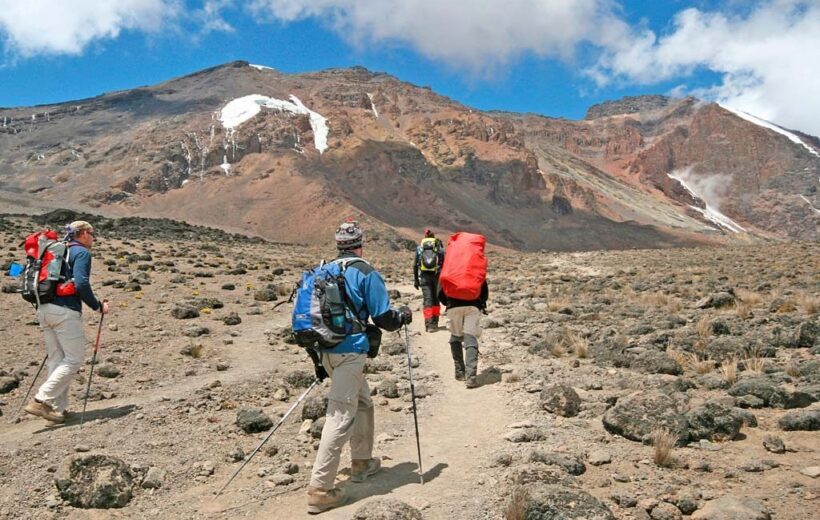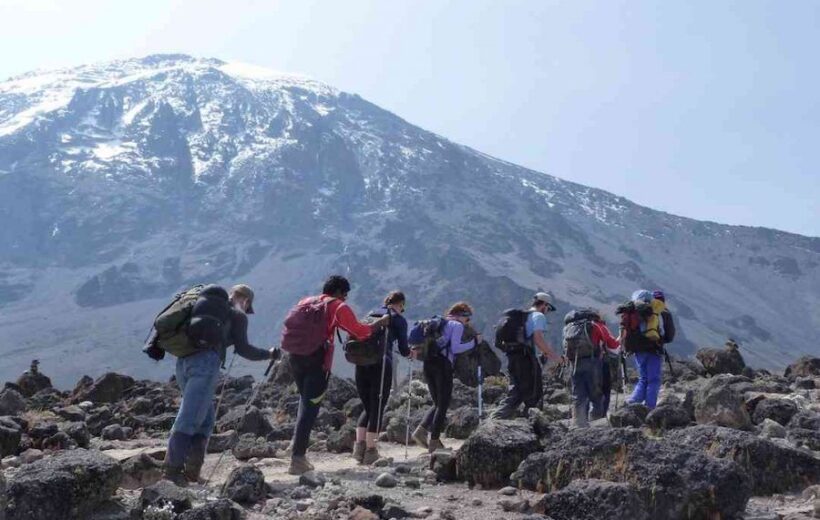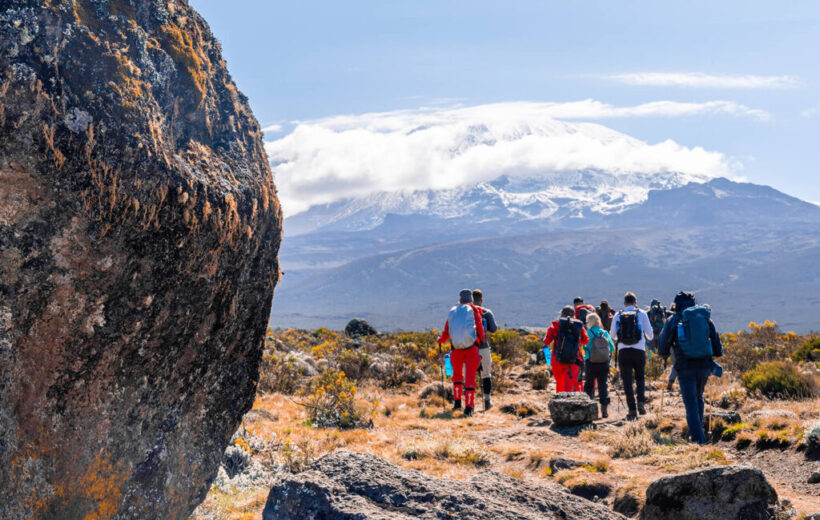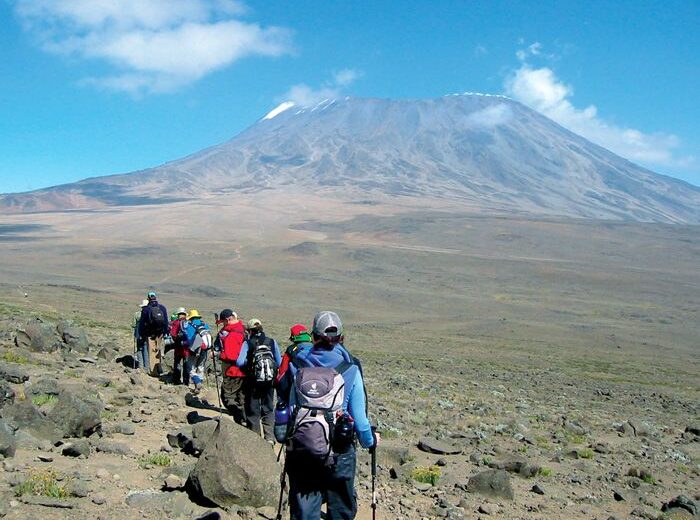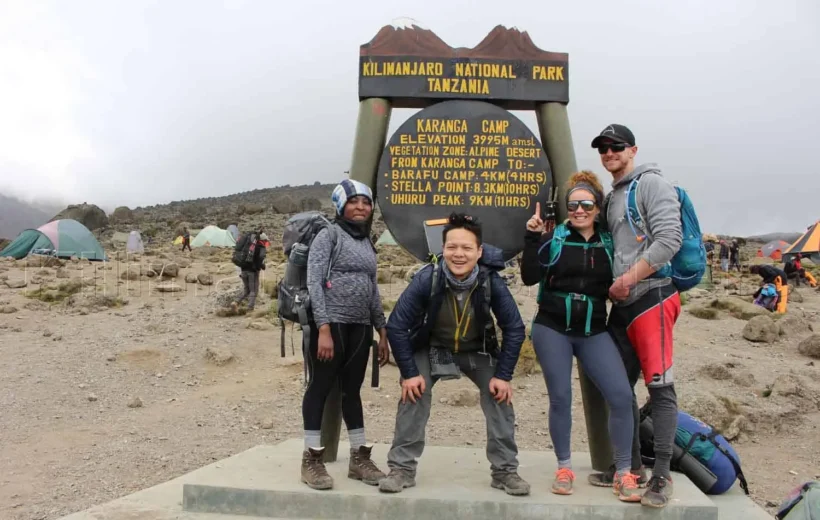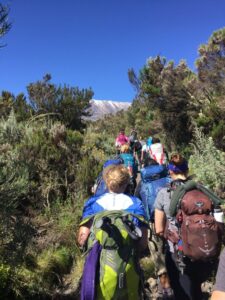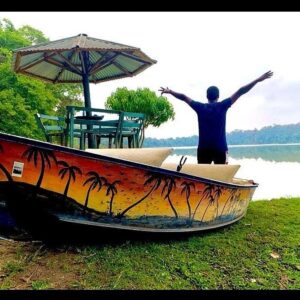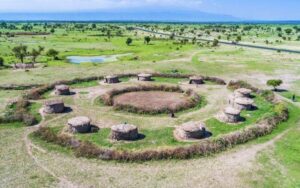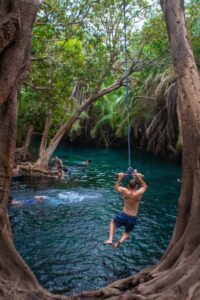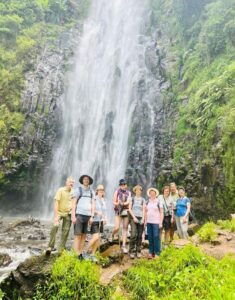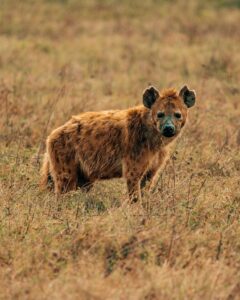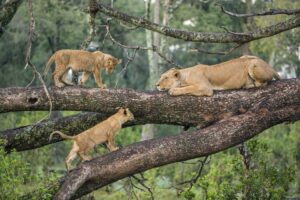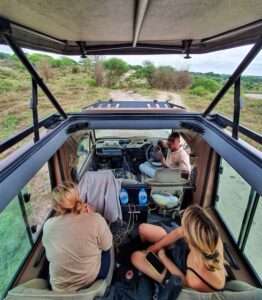6 Days Rongai Route Trek
Price
Min Age
Duration
Max People
Overview
The 6-Day Rongai Route is a popular choice for climbing Mount Kilimanjaro, Africa's highest peak. Unlike other routes that approach from the south, the Rongai Route is the only one to start from the north, near the Kenyan border. This provides a unique perspective of the mountain and its varied landscapes. It is known for being less crowded and having a more gradual slope in its initial stages, which can aid in acclimatization. The trek passes through diverse ecosystems, from montane forests to moorlands and alpine deserts, before joining the Marangu Route for the final ascent and descent. The six-day itinerary is a more challenging and fast-paced option compared to the seven-day version and is best suited for trekkers with some prior high-altitude experience.
Highlights
- Ascending Kilimanjaro from the quieter, northern side.
- Trekking through pristine wilderness areas with a unique perspective of the mountain.
- Enjoying panoramic views of the Kenyan plains.
- Camping next to Mawenzi Tarn, a stunning glacial lake.
- Crossing the barren lunar landscape known as "The Saddle" between the peaks of Kibo and Mawenzi.
- Reaching the summit, Uhuru Peak, and witnessing a spectacular sunrise.
- Descending via the well-established Marangu Route.
Other Important Information
- Success Rate: The six-day Rongai Route has a lower summit success rate (estimated 50-75%) than the seven-day version (estimated 70-90%) due to less time for acclimatization.
- Acclimatization: The "climb high, sleep low" principle is not as pronounced on this route. Proper hydration and a slow pace ("pole pole," Swahili for "slowly slow") are critical to preventing altitude sickness.
- Weather: The northern side of the mountain receives less rainfall, making this a good option during the rainy season. However, temperatures drop significantly at higher elevations, especially at night and on summit day.
- Accommodation: All nights on the mountain are spent in tents. The descent on the Marangu Route uses huts for overnight stays.
- Physical Fitness: A high level of physical fitness and prior experience with high-altitude trekking are highly recommended for the 6-day itinerary.
Route Map
Tour Plan
Day 1: Nalemoru Gate (1,990m) to Simba Camp (2,625m)
The journey begins with a scenic drive from Moshi to the Nalemoru Gate on the north side of the mountain. After completing the necessary registration formalities, you'll start your trek. The path winds through maize and potato fields before entering a pine forest. This stage of the trek is a gentle, consistent climb. The forest is home to various wildlife, including the black-and-white Colobus monkey. You'll reach Simba Camp on the edge of the moorland zone with expansive views of the Kenyan plains.
- Trekking Time: 3–4 hours
- Distance: 7 km (4.3 miles)
Day 2: Simba Camp (2,625m) to Kikelewa Camp (3,630m)
Today's trek is a steady ascent as the landscape transitions into the open moorland. You'll pass the "Second Cave" for a lunch break before continuing on a smaller path toward the jagged peaks of Mawenzi. The views of Kibo and the eastern ice fields become more prominent as you climb. You'll arrive at Kikelewa Camp, situated in a sheltered valley with great views.
- Trekking Time: 6–7 hours
- Distance: 10 km (6.2 miles)
Day 3: Kikelewa Camp (3,630m) to Mawenzi Tarn Hut (4,310m)
This is a shorter but steeper day of climbing. You'll hike up grassy slopes, and the vegetation will begin to disappear as you enter a more barren, rocky landscape. You'll reach Mawenzi Tarn Hut, spectacularly located beneath the towering spires of Mawenzi. The afternoon is dedicated to rest and acclimatization at this scenic camp.
- Trekking Time: 3–4 hours
- Distance: 6 km (3.7 miles)
Day 4: Mawenzi Tarn Hut (4,310m) to Kibo Hut (4,700m)
After breakfast, you will trek across the famous "Saddle," a vast, high-altitude alpine desert that stretches between the peaks of Kibo and Mawenzi. This is a very dry and desolate area with little to no vegetation. The trek is a gradual incline, with the impressive Kibo summit looming ahead. Upon reaching Kibo Hut, you'll rest and prepare for the final summit push that night.
- Trekking Time: 4–5 hours
- Distance: 9 km (5.6 miles)
Day 5: Kibo Hut (4,700m) to Uhuru Peak (5,895m) & Horombo Hut (3,720m)
The most challenging day begins around midnight with a wake-up call and a light breakfast. You'll start your ascent in the dark and cold, trekking on a path of volcanic scree. The climb to Gilman's Point on the crater rim is steep and demanding. After reaching Gilman's Point, you'll continue along the crater rim for another hour or two to Uhuru Peak, the highest point in Africa. After a brief photo opportunity and moment of triumph, you will begin your long descent, first back to Kibo Hut for a short rest and brunch, and then all the way down to Horombo Hut.
- Trekking Time: 12–14 hours
- Distance: 20 km (12.4 miles)
Day 6: Horombo Hut (3,720m) to Marangu Gate (1,860m)
On the final day of your trek, you will have a long but easy descent through the lush montane forest to Marangu Gate. Here, you'll sign out of the park and receive your summit certificate. A vehicle will be waiting to transfer you back to your hotel in Moshi for a well-deserved shower and celebration.
- Trekking Time: 5–7 hours
- Distance: 19 km (11.8 miles)
Included/Excluded
- All park fees, including camping and rescue fees.
- Professional, licensed, and experienced mountain guides, a cook, and porters
- All meals on the mountain (breakfast, lunch, and dinner).
- Drinking water.
- Tents and camping equipment.
- Transfers to and from the gate.
- International flights.
- Tanzania visa fees.
- Travel and medical insurance (including high-altitude trekking coverage)
- Personal climbing gear (e.g., sleeping bag, boots, trekking poles).
- Tips for the guides, porters, and cook.
- Alcoholic beverages and soft drinks.
- Personal expenses.
Tour Map
Frequency Asked Questions
How high is Mount Kilimanjaro?
Do I need prior climbing experience to trek Kilimanjaro?
What is the best time to climb Kilimanjaro?
Which route is the best for climbing Kilimanjaro?
How long does it take to climb Kilimanjaro?
Depending on the route, treks range from 5 to 9 days. Longer routes provide better acclimatization and higher summit success rates.
Do I need a guide to climb Kilimanjaro?
What is altitude sickness and how can I avoid it?
Altitude sickness is caused by reduced oxygen at higher elevations. Choosing longer routes, staying hydrated, and ascending gradually help reduce the risk.
What should I pack for a Kilimanjaro climb?
How fit do I need to be to climb Kilimanjaro?
What happens after the climb?
You may like
Book This Tour
Last Minute Deals
Why You Travel with us ?
- Local Expertise
- Tailor-Made Safaris
- Unforgettable Experiences
- Professional Safari Guides
- Comfort & Safety
- Affordable Packages
- Responsible Tourism
- 24/7 Support
- Diverse Destinations
- Trusted Reputation

